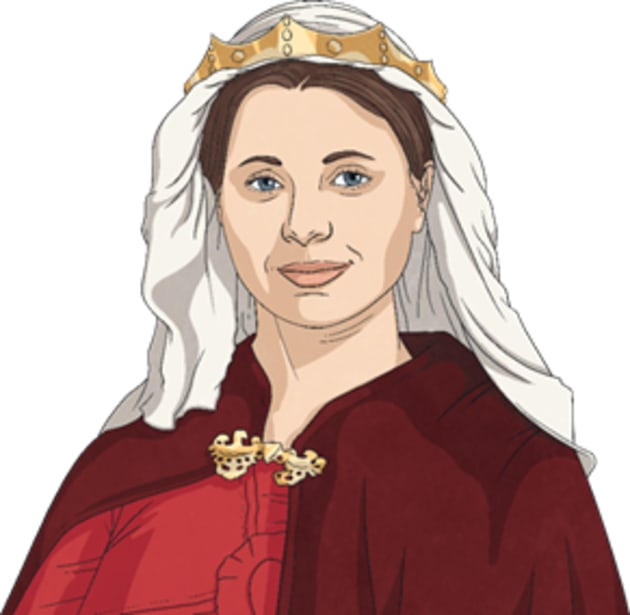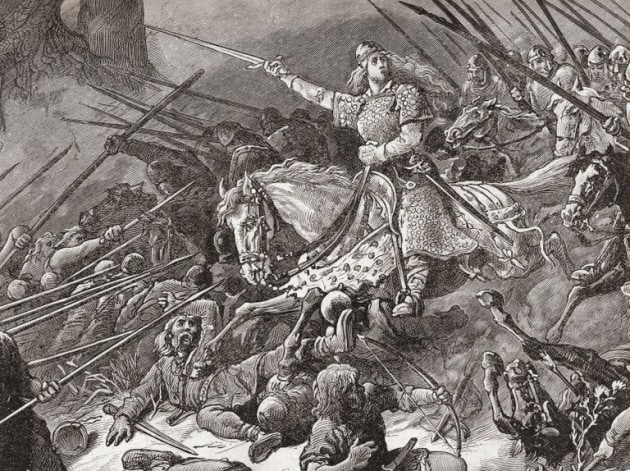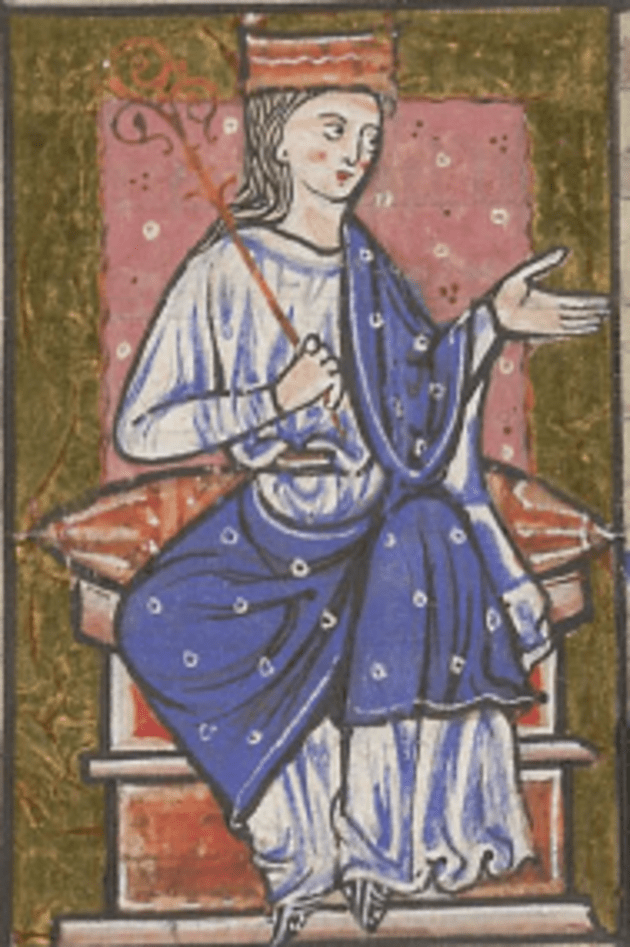


Aethelflaed, or Æthelflæd, was the eldest daughter of Alfred the Great. She ruled the Anglo-Saxon kingdom of Mercia from 911-918.
In the early tenth century, a large part of eastern England was occupied by the Vikings, who ruled over a territory called The Danelaw. One of the most significant Anglo-Saxon kingdoms was located in the west, this was called Mercia. After being defeated in the Battle of Edington by Alfred the Great, the Vikings and the Anglo-Saxons formed a peace agreement that was designed to stop further Viking invasions into Anglo-Saxon territory.
Alfred the Great was also able to secure an alliance between the English kingdoms by arranging a marriage between his daughter Aethelflaed and Æthelred, Lord of the Mercians. When Viking attacks resumed in the 890s, the combined Anglo-Saxon kingdoms were better prepared to defeat them, and by 909 Anglo-Saxon forces were raiding Danelaw.
Even before becoming Lady of Mercia, Aethelflaed was already very involved in defending her people from Viking invasions. When Æthelred's health began to decline, Aethelflaed began to take up many of his roles, and played a key part in the defeat of a Viking army attacking Chester.
She convinced Irish forces among the Vikings to switch sides, and she tricked a Viking army into entering the city where a hidden army waited to defeat them. In 911, Æthelred died, and Aethelflaed took control of Mercia and ruled as Lady of the Mercians.
Aethelflaed was renowned for her military strength. She worked to extend and improve the fortifications that her father had constructed, and she built defences around many towns such as Stafford, Warwick, Runcorn and Tamworth.

After repelling several Viking attacks, her armies captured Derby in 917 and in 918 she took Leicester after the town surrendered rather than face her forces in battle. It is believed that she may have led her armies into battle personally. By 918 the Vikings of York offered her their allegiance, but unfortunately Aethelflaed fell ill and died soon afterwards.
Despite her incredible achievements during her lifetime, such as consolidating her power in Mercia, beating back Viking attacks and leading several successful campaigns into Danelaw, Aethelflaed was largely written out of the primary source of Anglo-Saxon history, the Anglo-Saxon Chronicle, which mostly focuses on the achievements of her brother, Edward.

However, records of Aethelflaed's achievements survive in other historical texts such as the Mercian Register and the Annals of Ulster. Despite never holding the title of Queen, she is referred to as a 'renowned Saxon Queen' in some historical texts.
The fact that a woman held power over a kingdom such as Mercia, and for almost a decade, is unusual in medieval history, and it is believed that Aethelflaed never remarried because that would mean she would need to accept her new husband as lord.
Aethelflaed's relationship with her brother Edward is a source of debate among historians. They seemed to work together for the majority of their time as rulers, as Aethelflaed joined her brother Edward in the war to reconquer land from the Vikings.
However, after Aethelflaed's death, Edward took control of her lands and the absence of Aethelflaed from the Anglo-Saxon Chronicle seems to be a result of Edward wanting any potential Mercian claims on his kingdom removed.
Aethelflaed had one child, a daughter named Ælfwynn. Following her mother's death, Ælfwynn seemed intent on continuing her legacy, as she was unmarried and ruled Mercia for a few months before Edward took control. It is unknown what happened to Ælfwynn after this, but historians believe she may have been sent to a holy order.
Aethelflaed's efforts to drive the Vikings out of England were integral in helping Edward's son, Athelstan, unite the Anglo-Saxon and Viking kingdoms into one Kingdom of England.
Not only did her military conquests make significant progress in claiming areas of Danelaw for the Anglo-Saxons, but Athelstan spent time in her court and learned much about diplomacy from her, which was essential in his efforts to unite the various kingdoms under one leader. Sadly, after her death, Aethelflaed's role was downplayed in Anglo-Saxon historical texts in an attempt to reduce Mercian influence.
As a powerful female ruler, Aethelflaed has been recently rediscovered and her story has captivated modern writers. Her obscurity began to decline in Victorian times, when female rulers like Boudicca became popular. In 2018, exactly 1,100 years after her death, her funeral was re-enacted in Gloucestershire, and there are now several statues of her in England.
If you want a learning resource to help teach your class about Aethelflaed, you can use this Vikings and Anglo-Saxons LKS2 Lesson Pack in your lesson plan, as this includes a section on Aethelflaed and her achievements.
 Home
Home  Membership
Membership  Customer Support
Customer Support  Create
Create  Blog
Blog 




